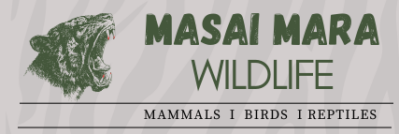Size and Appearance
- Size:
- Head-Body Length (HBT): 130 cm (51 inches)
- Shoulder Height (SH): 60 cm (24 inches)
- Recognition: The serval is a small but distinctively built wild cat, recognizable by its disproportionately long legs, short tail, and large, rounded ears. Its coat is spotted and blotched, with a striking black-and-white pattern on the back of its ears, which features a prominent white spot. This cat’s long legs and neck give it an unusually graceful and slender appearance compared to other African wild cats.
Habits and Behavior
- Activity: Servals are shy, solitary, and mostly nocturnal, making them hard to spot. However, they are sometimes encountered during the day as they rest or hide in tall grass. Though generally elusive, they may also be spotted with their kittens, especially during the wet season when food is abundant.
- Hunting Strategy: Servals are excellent hunters, using their oversized ears and acute sense of hearing to detect prey moving in tall grass. Once prey is located, the serval is known for its impressive vertical leaps, capable of pouncing up to 3 meters (10 feet) in the air to catch birds or other small animals. The serval’s hunting success rate is higher than that of many larger cats, and it often plays with its prey before consuming it whole.
Habitat
- Where to Find: In the Masai Mara, servals thrive in a variety of habitats, including open grasslands, lightly wooded savanna, and marshy areas. These areas provide the long grass and cover they prefer for hunting and hiding from predators.
Diet
- Feeds on: Servals primarily hunt small mammals such as hares and rodents, but they are also known to catch birds, reptiles, and amphibians. Their large ears help them detect the slightest movement of prey, and their agile pouncing abilities allow them to capture prey with precision. In some instances, they may swat birds out of the air mid-flight.
Predators and Threats
- Survival Tactics: When threatened, particularly by larger predators such as lions or hyenas, servals will often press their bodies close to the ground to avoid detection. If discovered, they may arch their back, raise their fur, and hiss loudly in a display of defense. Despite their small size, servals are highly agile and capable of escaping danger by leaping into nearby cover.
Reproduction
- Gestation and Kittens: Servals have a gestation period of 9½–11 weeks, and females typically give birth to 1–4 kittens. The young are well-hidden in burrows, dense grass, or bushy areas to protect them from predators. Females raise the kittens on their own, while males lead solitary lives, marking their territory with urine to establish dominance over overlapping ranges.
Unique Traits
- Vertical Leaping Ability: Servals are known for their extraordinary jumping skills, able to leap vertically to catch birds mid-flight. Their long legs not only aid in their agility but also allow them to hunt effectively in tall grass, where other predators might struggle to locate prey.
- Solitary Nature: Males are highly territorial and solitary, and their ranges often overlap with several females. These territories are marked by scent marking, and servals generally avoid conflict with larger predators, relying on stealth and speed to evade danger.
Spotting Servals in the Masai Mara
Serval sightings in the Masai Mara are rare but rewarding. The best chances of spotting one are during early morning or dusk in the more marshy or grass-covered areas of the park, where their prey is plentiful. While they tend to hide in tall grass during the day, a glimpse of their distinctive ears or a pounce in the distance may reveal their presence. Their nocturnal and secretive nature means that most sightings happen when they are actively hunting or patrolling their territory.
In conclusion, the serval is one of the Masai Mara’s most elusive and unique small cats. Its striking appearance, remarkable hunting abilities, and shy nature make it a special sight for any safari-goer lucky enough to spot one. With a combination of patience, the right habitat, and timing, observing a serval’s graceful movements in the wild is a highlight of the Masai Mara experience.
